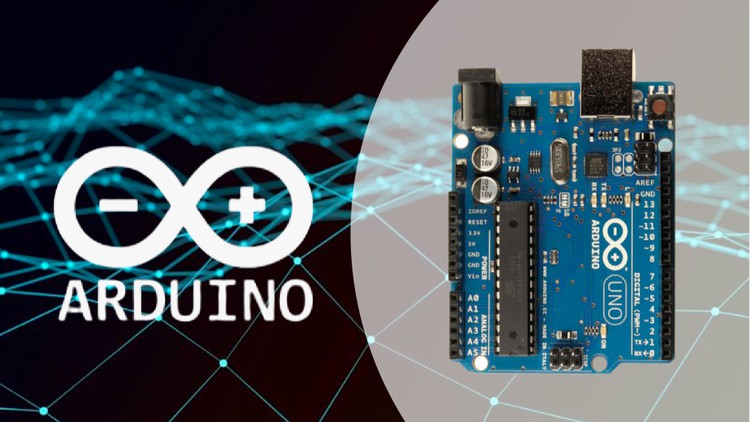Master The Art of CC++ programming with Arduino | 2021
- Description
- Curriculum
- FAQ
- Reviews
I will introduce beginners to all the fundamentals of the Arduino programming language and the IDE to understand and practice how to write their own Arduino program from scratch. You will learn all the fundamentals of the C and C++ programming applied to an Arduino Uno board and practice your Computational Thinking with several exercise that will teach you how to write autonomously a Code from scratch without making blind Copy & Paste of others programmer’s code. You’ll both master how to use an Arduino Uno Board and the Arduino programming language to bring your ideas into functionals and well written Code.
The course follow a Step by Step approach specifically tailored for Beginners with no prior experience with Programming and Arduino and will clearly explain all concepts, starting from the very basic to the most advanced, and many insights to effectively understand how to use the C and C++ programming in many real case examples.
Step by step explanation of:
-
Anatomy of an Arduino Uno Board
-
The Breadboard and its usage
-
The Arduino IDE: installation and overall functionalities
-
How connect you Arduino and upload a program
-
Difference between Analog and Digital pins
-
How to use Digital pins + Step By Step examples
-
How to use Analog pins + Step by Step examples
-
What is PWM and how to use it
-
How to use the Serial communication and the Serial Monitor
-
And Much Much more
———————————————————————————————————————————-
Who is this course designed for?
You are curious about how
Are you passionate of Arduino but you have no prior experience with C Programming?
Are you interested in Electronic and Robotics?
Are you diving into the beautiful world of the IoT with Arduino?
Are you creating your custom PCB design based on the AVR Microcontroller using Altium or Kicad?
Are you just starting with Embedded C for creating your own embedded system?
In all this case achieving a strong understanding of the Arduino programming language could be extremely useful for your intent. Learning the basic of the C programming language is the base of every microcontroller based project and starting with Arduino is an exceptional occasion to dive into this beautiful world with a more simplified approach.
Start your learning journey with my course and have fun acquiring such powerful skill!
-
1What is ArduinoVideo lesson
Discover what is Arduino and how to use it to make awesome projects
-
2Anatomy of ArduinoVideo lesson
Discover what are the components of an Arduino Board
-
3The breadboardVideo lesson
Learn how to use a Breadboard and Jumper Wires
-
4The Arduino IDEVideo lesson
Learn how to install the Arduino IDE and all its functionalities
-
5EXERCISE #1 - The "Hello World" programVideo lesson
Write your first program and learn how to use the Arduino Serial monitor
-
6Digital PinsVideo lesson
Learn everything about how to configure and use the the Arduino GPIOs
-
7EXERCISE #2 - Blink an LEDVideo lesson
Learn how to write a program to use a Digital pin to drive an LED
-
8EXERCISE #3 - Use a ButtonVideo lesson
Learn how to configure a Digital pin with Input Mode and use it to read an external Button
-
9EXERCISE #4 - Use LED + ButtonText lesson
-
10Analog PinsText lesson
-
11EXERCISE #5: Use a PotentiometerText lesson
-
12analogWrite()Text lesson
-
13EXERCISE #6 - Dimmer an LEDText lesson
-
14EXERCISE #7 - Play a tone with a BuzzerText lesson
-
15Main components of a programText lesson
-
16VariablesText lesson
-
17EXERCISE #7 - Count SecondsText lesson
-
18FunctionsText lesson
-
19EXERCISE #8 - Write a functionText lesson
-
20ArraysText lesson
-
21EXERCISE #9 - How to use arraysText lesson
-
22EXERCISE #10 - Play Music using arraysText lesson
-
23Control FlowText lesson
-
24"If else" StatementText lesson
-
25Conditional operatorsText lesson
-
26Exercise #10 - Combine many buttonsText lesson
-
27EXERCISE #11 - Non Blocking delay FunctionText lesson
-
28LoopsText lesson
-
29Exercise #11 - Control many LEDsText lesson
-
30"Switch" StatementText lesson
-
31EXERCISE #12: Level IndicatorText lesson

External Links May Contain Affiliate Links read more





